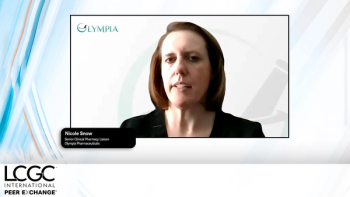
Study Finds That Using Seven Points Across a Peak Is Sufficient for Accurate LC–MS/MS Quantitation
A recent study has found that using only seven points across an LC–MS/MS peak can provide sufficient accuracy and precision for drug quantitation studies in drug discovery and development, challenging the "rule-of-thumb" of using at least 15 points.
A new study published in the Journal of the American Society for Mass Spectrometry has found that using only seven points across a chromatographic peak is sufficient for accurate and precise peak area measurements in LC–MS-based quantitation experiments in drug discovery and development (1). The "rule-of-thumb" has been to use 15 or more points across a peak, but this study shows that using only seven points can provide more than enough accuracy and precision for drug quantitation studies. The study used simulated Gaussian curves and low and high concentration samples with different sampling intervals, peak widths, peak sizes, and instruments, and found no significant difference in peak area calculations and relative standard deviation of the peak areas.
The research was conducted by Wei Zeng and Kevin P. Bateman from Merck & Co., Inc. in West Point, Pennsylvania, USA. The authors explain that the number of points across a chromatographic peak is a key factor in the accuracy and precision of the measured peak area. However, the "rule-of-thumb" of using 15 or more points may not always be necessary and can limit the development of methods that fully optimize the signal-to-noise ratio for the assay.
The study found that using seven points across the peak for peaks that are nine seconds or less wide provided peak area calculations within 1% of the expected total peak area using the Trapezoidal and Riemann rules, and 0.6% for the Simpson rule. The Trapezoidal rule and Riemann sum method are traditional numerical integration methods used to calculate the peak area of chromatographic peaks. Both methods use the area under the curve of the peak by dividing the peak into smaller trapezoids or rectangles. The Simpson rule is a higher-order numerical integration method that calculates the area of the peak by approximating it with quadratic curves. These methods are widely used because they are simple and provide a reasonably accurate estimate of peak area with 15 points across a peak.
Low and high concentration samples were assayed using three different LC methods on two different instruments, and the difference in peak area and relative standard deviation of the peak areas was less than 5%. The results suggest that using only seven points across a chromatographic peak can provide sufficient accuracy and precision for drug quantitation studies, allowing for the development of methods that optimize the signal-to-noise ratio. This finding could lead to more efficient and cost-effective drug discovery and development processes.
Reference
(1) Zeng, W.; Bateman, K. P. Quantitative LC–MS/MS. 1. Impact of Points across a Peak on the Accuracy and Precision of Peak Area Measurements. J. Am. Soc. Mass Spectrom. 2023. DOI:
Newsletter
Join the global community of analytical scientists who trust LCGC for insights on the latest techniques, trends, and expert solutions in chromatography.





